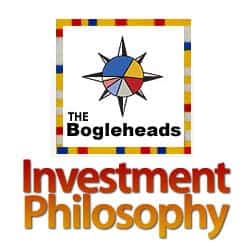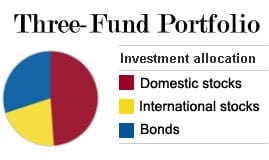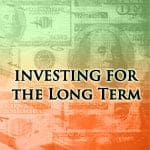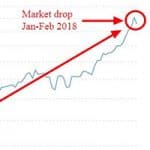Over the years as I’ve looked into investing for my family, one of the names that consistently comes up when researching low cost and effective ways to invest is the name Jack Bogle.
John C. Bogle is the founder of Vanguard Group, one of my favorite low cost places to invest. The more I read about Bogle and his philosophies, and those of a group of his followers called the Bogleheads, the more I know I fall in line with what they believe about investing.
Bogle’s ideas are based on the idea that investing should be simple, and that just about anyone can get good returns as long as they’re willing to put in even a minimal amount of work, and stick with a plan for the long term.
It’s about making the right long term decisions.
They stress that it’s important that you start saving now, not later, diversify your investments, minimize your costs, and be able to stick to your plan through thick and thin.
So let’s take a look at the Bogleheads investment philosophy and it’s rules in depth.
Quick Navigation
- Develop A Workable Plan (Rule 1)
- Invest Early & Often (Rule 2)
- Never Bear Too Much Or Too Little Risk (Rule 3)
- Diversify (Rule 4)
- Never Try To Time The Market (Rule 5)
- Use Index Funds When Possible (Rule 6)
- Keep Costs Low (Rule 7)
- Minimize Taxes (Rule 8)
- Invest With Simplicity (Rule 9)
- Stay the course (Rule 10)
- Conclusion
Develop A Workable Plan (Rule 1)

Living this way means avoiding debt through credit cards, home equity loans or other consumer debt. If you already have debt, work as hard as you can to pay that debt off to give yourself a solid foundation to start with. Make sure to set aside enough for household needs, but make sure your plan allows for a good percentage of your income saved for retirement.
Invest Early & Often (Rule 2)
Once you’ve got a good workable plan in place, gotten rid of debt and established an emergency fund, it’s time to start accumulating wealth.
The earlier you want to retire, and the more assets you want to have in retirement for spending and giving, the earlier you’ll want to start investing. You’ll also want to ensure you’re saving enough. The Bogleheads suggest a good baseline number is 20% of income.
The earlier you can start investing, the better. The power of compounding interest on your investments will be magnified the longer you have to invest.
The best way to invest is to setup automatic deductions from your paycheck, or auto deposits from your bank account every month right after payday. Make investing automatic, and since you never really see the money in your account you won’t really miss it.
Never Bear Too Much Or Too Little Risk (Rule 3)
Owning stocks is really the best way to get the returns you need to accumulate funds for retirement. Over long periods of time the stock market roughly follows the pattern of the economy, which is to grow, but in the short term stocks can be volatile and risky.
Because of the risk involved it’s important to have an asset allocation that involves less volatile investments like bonds. Bonds don’t have as high potential returns as stocks, but they carry much less risk.
Choosing an asset allocation of stocks versus bonds is a personal decision in which you need to weigh your ability and need to take risk. The more risk you’re willing to take, the less bonds you need. Usually the older you are and closer to retirement, the more bonds you’ll want in your portfolio – to avoid losing a large percentage of your investments (like many did in 2008).
The rule of thumb for stocks to bonds allocation ratio is typically to have your age in bonds. So if you’re 30 years old, you should have 30% of your portfolio in low risk bond funds.
Diversify (Rule 4)
Instead of trying to pick winners and losers in the stock market, Bogleheads tend to buy funds (typically index funds) that are widely diversified or that have an approximate mirror of the entire market.
Doing this essentially guarantees that they will receive the average return of all investors, which since you’re not paying fees for an actively managed funds means you’ll come out ahead of the average investor. Over half of actively managed funds usually underperform index funds over the long haul!
Never Try To Time The Market (Rule 5)
In the Bogleheads investment philosophy one thing that you don’t try to do is time the market. While you may get lucky some of the time, a good deal of the time people tend to buy high and sell low, short circuiting gains when trying to time the market.
Instead try to create a good long term plan and stick with it.
Use Index Funds When Possible (Rule 6)
The best low cost way to invest is to buy the entire stock market through index funds. You can do that through either traditional mutual funds or ETFs.
When an investor buys an index fund they then own a piece of basically every public company in the United States. This wide diversification means lower risk because if one of those companies fails, it doesn’t have a big effect. If you owned only that one company, however, (can you say Enron?) you might lose your shirt.
Besides investing in the total U.S. stock market you can further diversify by buying international index funds. Usually it is suggested to buy anywhere from 20-40% of the portfolio in international stocks.
Keep Costs Low (Rule 7)
A key part to enjoying good returns over the long haul is to keep your costs low. While an fund expense ratio of .15% versus 1% might not seem like much, the effect of compounding over a lifetime could mean that you’ll have hundreds of thousands of dollars less for your retirement.
It’s important to make sure you find the best lowest cost available options to you. If your 401(k) doesn’t have index fund options (which some don’t), do your best to find the largest most diversified funds with the lowest fees that you can.
Minimize Taxes (Rule 8)
Rather than focusing on something that can’t be controlled, like how the stock market does every year, Bogleheads prefer to focus on things they can control.
One thing you can control is ensuring your accounts are tax efficient. In other words, take advantage of tax advantaged retirement accounts like 401(k)s, IRAs and Roth IRAs, as well as looking carefully at the tax efficiency of each holding in taxable accounts.
Invest With Simplicity (Rule 9)
Another rule is for Bogleheads investors is to make sure to invest with simplicity.
Simplicity is the master key to financial success. When there are multiple solutions to a problem, choose the simplest one. – John Bogle

Others in the Bogleheads sphere add in a third fund, Vanguard Total International Stock Index Fund (VGTSX), which gives international stock exposure as well. This is what is called a three fund portfolio.
Finally, there are some that would recommend simplifying even further just investing in an all-in-one Target Retirement fund.
Stay the course (Rule 10)
One thing that is essential to the Bogleheads investment philosophy is to choose a reasonable investment plan, and then stick with it for the long haul. While it may be easy to do that when index funds are outpeforming alternatives, it can be tough to stick with it when times are tough, like after the crash in 2008.
You have to do your best to stay the course, try not to be distracted by the trendy new investments and rebalance your portfolio once every year.
Conclusion
The Bogleheads investor is someone who saves a lot, has an asset allocation that includes both stocks and bond asset classes, buys low cost diversified funds, is tax efficient and stays the course.
Being a Boglehead investor really is pretty simple and only requires part of a day to setup the first time. From then on it will require an hour or two to rebalance your accounts on a yearly basis.
There is no need to stay on top of the markets day to day, or time the markets. You simply live below your means, save a lot and invest in low cost index funds to enjoy good long term returns.
Even though Bogleheads investing on it’s face is extremely simple, it is based on a lot of comprehensive research over the years that show that buying and holding the whole stock market consistently outperforms many of the alternatives.
So keep it simple, invest and enjoy good long term returns. Sounds good to me.
What are your thoughts about the Bogleheads investing philosophy? Is it something you might consider trying?




I’m an advocate for following John Bogle’s philosophies and investing in index funds. It’s an inexpensive and easy strategy for the average investor. My retirement account consists of mainly the funds listed above!
Yeah, I think I subscribe to the KISS mantra – keep it simple stupid. Keep it as simple as you can and don’t try to outsmart yourself. Do something that has a proven track record and stick with it.
You really can’t beat Vanguard for low cost index fund investing!
My allocation may help as a basis for anyone that may find this post!
—————————————————————-
60% Stocks / 30% Bonds / 10% Cash
Stocks (Taxable):
– 30% VTI: Total Stock ETF
– 30% VXUS: Total International ETF
Bonds (Tax-deferred):
– 15% BND (or VWITX Tax Exempt Muni if in Taxable): Total Bond ETF
– 15% VTIP: Short-term Inflation Protected Treasuries ETF
Cash (emergency fund):
– 10% VMSXX (or VWSTX Short term muni if you hold 6 months emergency) : Tax-Exempt Money Market